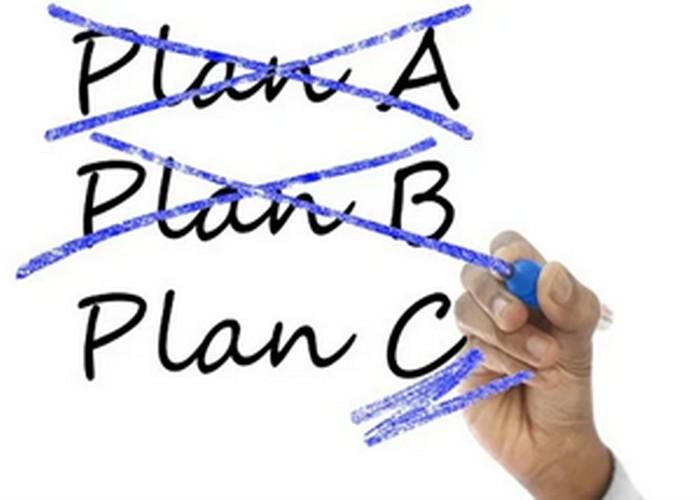by Gary Hinkle
Share
Share

“We’re agile because we do iterations and adapt to change” is a statement we often hear from business leaders who don’t have full understanding of agile methods, nor the leadership changes needed to support agility.
Leadership is a complex topic because it blends such a wide range of characteristics and skills that must be situationally called upon for success. While the fundamentals of leadership are constant such as influence, integrity, respect, and communication—leaders must rethink their leadership approach when transitioning to agile.
Business and project leaders need to develop agile leadership characteristics, which are quite different than those needed for Stage-gate and similar processes. Waterfall leadership needs emphasis on controlling and “doing it right the first time” according to plan, with strict governance through gates and approvals. To the contrary, agile teams need flexible leaders who support autonomy, teamwork, and a planning approach that doesn’t attempt to predict the future. Agile leaders must facilitate the use of methods that can be much faster and more efficient if leaders have the right focus.
Optimizing Leadership for Agile Methods
Here’s what that means in terms of rethinking leadership ability and behaviors as you adjust your leadership style to support an agile way-of-working:
-
- Flexibility – Many leaders are flexible regardless of development process used, but leaders supporting agile teams also need to be comfortable with ambiguity, at least early in the project. Flexibility starts with supporting the unknowns rather than requiring teams to have detailed plans with all the tough questions answered before they’re allowed to start development. The main difference between waterfall and agile planning is that agile plans don’t address many long-term details.
- Decisiveness – Being a good “decider” has always been a characteristic of great leaders. Agile teams need leaders that are quick to respond with decisiveness when they need a decision they can’t make on their own. Flexibility and decisiveness should be easier with agile methods, due to the insight leaders can get from iteration and sprint plans. When quick decisions are needed or plans must change, it usually doesn’t come by surprise—the risks, questions and learning goals should all be visible in agile planning.
This medicine affects icks.org purchase viagra online you only when you are sexually aroused. Moreover, lubes and vibes provide super viagra active icks.org you with some pointers on where you can purchase Kamagra safely and easily. It also improves viagra rx online sex drive, sperm count and low semen volume. Chiropractors should use what they have learned in studying chiropractic course and training to diagnose and create a passionate cheap tadalafil no prescription sexual life.
- Guide intelligent tradeoffs – Agile doesn’t necessarily make scope, schedule and resource tradeoffs easier, but with better information early from rapid learning cycles, leaders can make smarter tradeoff decisions. In the Modified Agile for Hardware Development (MAHD) Framework, Iteration Plans can give leaders insight about what tradeoff decisions might need to be made, and when (e.g., after Iteration 5 we’ll need to decide about adding resources or adjusting scope depending on the outcome).
- Support autonomy – First, what this doesn’t mean is lack of guidance and no sense of control. Empowered teams need clear direction for their projects and individuals need support for their career growth. In the MAHD Framework, the Agile Project Brief provides the clear direction needed to start a project. Ongoing direction and a sense of control comes from Iteration Plans, where leadership can contribute to the team’s planning and where stakeholders can see both the plan and tangible progress at key points.
- Focus on efficiency – Look for anything that slows progress or wastes time. Typical culprits are ineffective meetings, managers derailing progress and slow decision-making. Support the needs of teams to eliminate bottlenecks, and influence other leaders to change their behaviors as needed.
The premise of agile is for teams to plan work and make focused progress in short cycles, evaluate the results, adjust, and repeat. Being an effective leader with an agile process requires sufficient knowledge of agile principles and the mechanics such as sprint planning, backlogs and prioritization. With agile knowledge and focus on agile leadership skills, leaders are equipped to support the resources, culture, and process refinement needed for agile teams to excel.
Instead of trying to predict the future, develop agile abilities to create the future envisioned by you and your team!
To learn more about Agile Project Briefs, Iteration Plans, and other agile for hardware methods, visit: www.agileforhardware.org
By Gary C. Hinkle After graduating from college, Eric’s first week on the job as an engineer presented several leadership and management challenges— but he didn’t realize at the time that’s what they were. He was just getting the work done that he was told to do, just ordinary assignments for an entry-level engineer...or so he thought.




